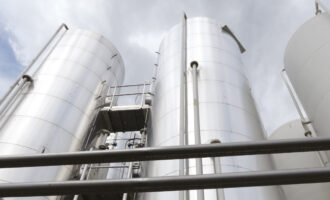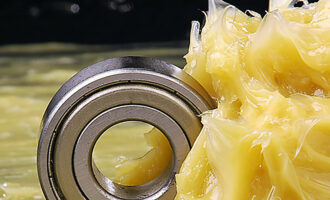
The primary challenge in electric motors is cooling, not lubrication
Driver experience is an essential part of vehicle ownership. Undeniably, the shift to an electric vehicle (EV) alters this experience for motorists accustomed to the roar of the internal combustion engine, extended driving ranges, and hasty refuelling.
 The time it takes to charge is one of the biggest challenges for battery electric vehicles (BEV), says Bethan Warren, applications scientist, at Croda Europe Limited. It also delivers the greatest thermal management challenge, she says. Established in 1925, Croda is a British chemicals company that produces speciality additives. Their Energy Technologies business operates in niche applications in the battery and catalyst industries.
The time it takes to charge is one of the biggest challenges for battery electric vehicles (BEV), says Bethan Warren, applications scientist, at Croda Europe Limited. It also delivers the greatest thermal management challenge, she says. Established in 1925, Croda is a British chemicals company that produces speciality additives. Their Energy Technologies business operates in niche applications in the battery and catalyst industries.
Historically, large battery packs have not required specialist cooling due to the physical size and capacity of the battery and the relative current flow. In April 2018, Swiss company ABB launched the Terra High Power Charger, the world’s first 350kW charger, with the ability to add up to 200 kilometres of range in just eight minutes. With investment in EV infrastructure gaining momentum, ultra-fast-charging stations are being rolled out around the globe.
Fast charging technology increases the current sent to a battery to fill up its capacity more quickly. These higher current flows generate heat inside the battery cells and interconnection systems, proportionate to the amount of current and internal resistance. Reducing the time to charge EVs has prompted demand for advanced thermal management of battery packs and interconnected systems.
Extremes of temperatures negatively impact battery performance. Consequences may include a reduction in a battery’s lifespan, charge acceptance, power output and driving distance. Safety is also a central issue as uncontrolled temperatures could trigger a dangerous thermal runaway chain reaction. Heat must be diffused effectively to protect a battery from rapid deterioration.
 Recent research has pinpointed an optimal temperature range between 25 °C to 40 °C for lithium-ion (Li-ion) batteries. Though, “effective thermal management is not as simple as keeping the battery in a goldilocks temperature range,” says Warren. Eliminating hotspots within the pack to ensure temperature homogeneity is vital to ensure the lifetime of the battery, she says. Diversity of cell types — cylindrical, prismatic and pouch — present further challenges when it comes to cooling.
Recent research has pinpointed an optimal temperature range between 25 °C to 40 °C for lithium-ion (Li-ion) batteries. Though, “effective thermal management is not as simple as keeping the battery in a goldilocks temperature range,” says Warren. Eliminating hotspots within the pack to ensure temperature homogeneity is vital to ensure the lifetime of the battery, she says. Diversity of cell types — cylindrical, prismatic and pouch — present further challenges when it comes to cooling.
In EVs, the role of lubricants extends beyond their traditional bounds. While they continue to assist in wear reduction and lubrication, the primary challenge in electric motors is not lubrication but cooling, says Warren.
Natural air-cooling systems, such as fans and blowers, are one of the more common and lowest cost methods for battery cooling. The approach offers a simple, low weight cooling approach devoid of concerns about liquid leaks or cooling loops. Yet, we may have reached the limits of what can be air-cooled. Air cooling is no match for the extreme heat generated with advanced charging of batteries, particularly in more temperature environments.
Liquid cold-plate cooling is a far more effective method than air cooling, even in low flow, and is employed by leading EV manufacturers such as Tesla and General Motors. Auto manufacturers use a refrigerant and a base plate, with coolants circulated throughout the battery packs in tubing to cool the cells. Coolants are typically a mix of water and petroleum-based products (such as propylene glycol) and offer excellent thermal conductivity and low freezing points.
The issue with liquid cooling, says Warren, is that heat needs to be transferred from the heat generation source, through several components, such as fin plates, to reach the coolant. This can lead to cell inhomogeneity. There is general agreement that heat removal needs to be moved closer to the heat generation source, she says. Direct liquid immersion cooling offers an advanced solution to thermal management challenges with the heat transfer beginning at the source. Battery cells are dropped directly into dielectric fluids maintaining constant coolant to cell contact.
A 2016 comparative study on cooling methods for Li-ion batteries considered four cell-cooling methods — air cooling, direct liquid immersion, indirect liquid cooling, and fin cooling. Air cooling required two to three times more energy to maintain the same average temperature as other cooling methods. The research concluded indirect liquid cooling was a more practical approach than direct liquid cooling, though it demonstrated a slightly lower cooling performance.
Just three years later, XING Mobility, a provider of advanced electric vehicle powertrain and battery technology, unveiled the world’s first immersion-cooled modular battery pack system at The Battery Show in Stuttgart, Germany on 7-9 May 2019. Immersion cooling requires the use of more specialist fluids, says Warren. Fluids must be electrically insulating and maintain a high level of oxidative stability, as they will be filled for life, she says.
Esters, a chemical compound derived from carboxylic acids, may provide a solution to some of the thermal management challenges confronting OEMs and lubricant manufacturers. Esters have excellent thermal properties — it is possible that they could be used to cool sensitive components such as battery packs, regulating temperature and allowing better efficiency.
Ongoing research by Croda into the tribological and tribochemical performance of esters has yielded promising results. It is the ability of esters to both cool and lubricate that may set them apart. “Cooling the electric motor and lubricating gears can be done with one fluid, allowing one cooling loop instead of two,” says Warren. This allows a reduction in weight and space, she adds.
Unlike other dielectric fluids, esters are also fully synthetic and can be developed with specific properties in mind, she says. With all fluids it is a balancing act, but esters are often more balanced with respect to property mix in the finished fluid. The chemical compound may be suitable in the direct immersion cooling of batteries, and also has potential applications in gears, greases and bearings, says Warren.
Very low viscosity fluids are necessary to reduce energy losses in gear oils while maintaining lubrication and minimising wear. Croda has witnessed encouraging results with low viscosity lubricating base oils balancing high gear efficiency with high thermal efficiency, while demonstrating compatibility with different materials and electronics.







